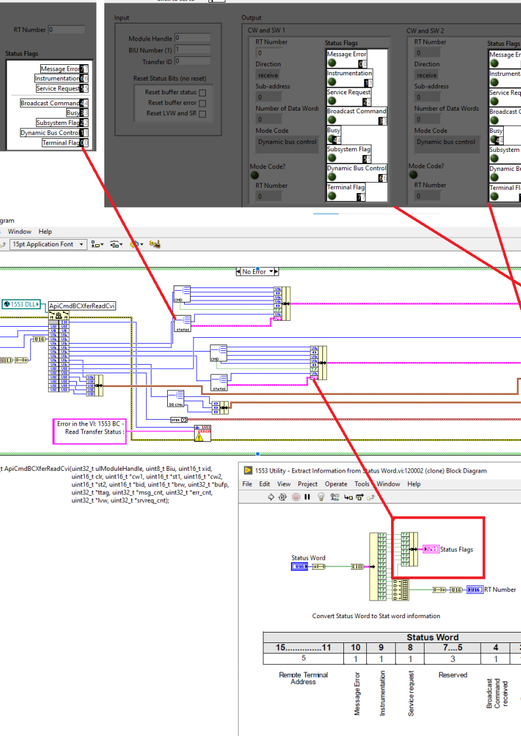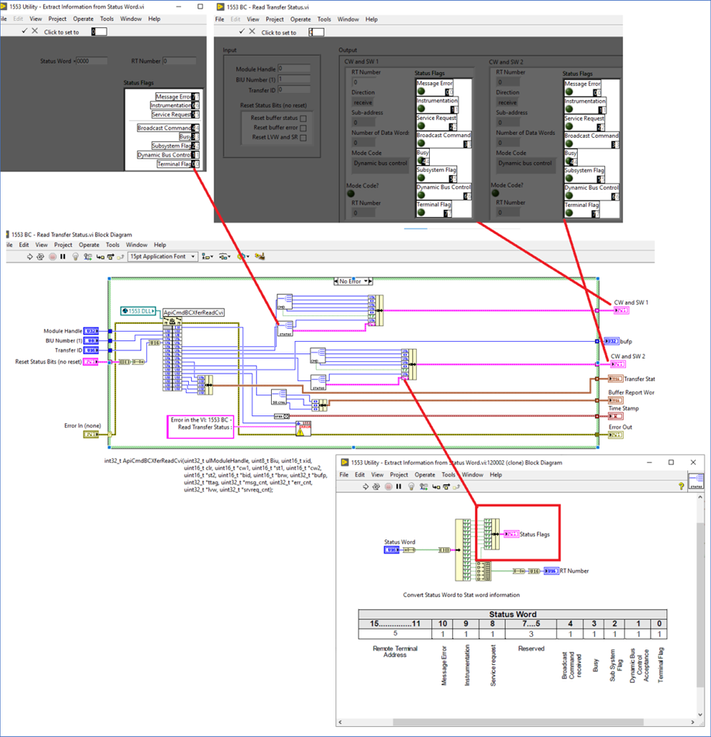ni.com is currently undergoing scheduled maintenance.
Some services may be unavailable at this time. Please contact us for help or try again later.
- Subscribe to RSS Feed
- Mark Topic as New
- Mark Topic as Read
- Float this Topic for Current User
- Bookmark
- Subscribe
- Mute
- Printer Friendly Page
ASC1553-A LabView Examples
Solved!04-20-2022 08:00 AM
- Mark as New
- Bookmark
- Subscribe
- Mute
- Subscribe to RSS Feed
- Permalink
- Report to a Moderator
Dear Sirs,
I'm trying to find an example to use AIM GmbH USB-MIL-STD-1553 board (ASC1553-A)
I'm currently doing reverse engineering with the c source provided by the seller.
Best regards.
Solved! Go to Solution.
- Tags:
- MIL-STD-1553
04-20-2022 09:33 AM - edited 04-20-2022 09:38 AM
- Mark as New
- Bookmark
- Subscribe
- Mute
- Subscribe to RSS Feed
- Permalink
- Report to a Moderator
http://sine.ni.com/apps/utf8/niid_web_display.model_page?p_model_id=17470
looks like you can buy one:
https://aviftech.com/ait_products/mil-std-1553-lv/
Have a pleasant day and be sure to learn Python for success and prosperity.
04-21-2022 03:09 AM - edited 04-21-2022 03:18 AM
- Mark as New
- Bookmark
- Subscribe
- Mute
- Subscribe to RSS Feed
- Permalink
- Report to a Moderator
@Jay14159265 wrote:
http://sine.ni.com/apps/utf8/niid_web_display.model_page?p_model_id=17470
looks like you can buy one:
https://aviftech.com/ait_products/mil-std-1553-lv/
The second link is very likely NOT the right driver. This is an interface from AIM GmbH. That driver is for the AIT 1553 interface hardware boards. Almost the same letters but not the same hardware manufacturer.
The first link seems however to match the manufacture and as its page says it is a wrapper. That means simply a VI library to access the manufacturer specific DLL driver. But you need to watch out, the driver page talks about the ACX1553 hardware while the OP talks about the ASC1553 hardware board.
The ACX is the PXI version of the interface and the ASC is the USB version. It is very possible and likely that AIM has an universal API interface for all its 1553 hardware so that driver may also work for the USB interface.

12-21-2023 03:04 AM
- Mark as New
- Bookmark
- Subscribe
- Mute
- Subscribe to RSS Feed
- Permalink
- Report to a Moderator
Hi,
These are not the right drivers, the driver is available in the NI Package Manager, just do a simple search with the term "1553" to find it. It is also available on the AIM site. It contains a complete library and some very useful examples, but it lacks examples of how to use the buffer functions needed when you know that the frequency of exchanges can exceed kHz (I'm looking for that, and I'll ask NI support again). you can find it on the product page for your card on the AIM website
There's also a very useful and indispensable piece of software called 'PBA.pro', which can play the role of a 'soft front panel' and help to understand the protocol and carry out tests without programming: it can be found on the AIM site, it's not free (30-day evaluation period), and there's a light version. Depending on the software options, it is possible to integrate Python scripts, particularly for the production and validation test program AS4111 and AS4112 tests in the MIL-STD-1553 standard.
https://www.aim-online.com/products-overview/software/application-software-pba-pro/
https://www.aim-online.com/products/pba-pro-light/
However, the LabVIEW driver could be improved in terms of architecture quality, and I've pointed out a bug in the communication error status feedback (a def type is missing on the 'status flag' cluster, they've used the 'Array to cluster' function and a simple 'bundle' (not 'bundle by name'):
12-21-2023 08:29 AM
- Mark as New
- Bookmark
- Subscribe
- Mute
- Subscribe to RSS Feed
- Permalink
- Report to a Moderator
These are not the right drivers, the driver is available in the NI Package Manager, just do a simple search with the term "1553" to find it. It is also available on the AIM site. It contains a complete library and some very useful examples, but it lacks examples of how to use the buffer functions needed when you know that the frequency of exchanges can exceed kHz (I'm looking for that, and I'll ask NI support again).
There is also a very useful and indispensable software program called "PBA.pro", which can play the role of "soft front panel" and help to understand the protocol and carry out tests without programming. It can be found on the AIM website, is not free (30-day evaluation period), and there is a light version. Depending on the software options, it is possible to integrate Python scripts, particularly for the AS4111 and AS4112 tests in the MIL-STD-1553 standard.
However, it could be improved in terms of architecture quality, and I've pointed out a bug in the communication error status feedback (a def type is missing on the 'status flag' cluster, they've used the 'Array to cluster' function and a simple 'bundle' (not 'bundle by name'):



